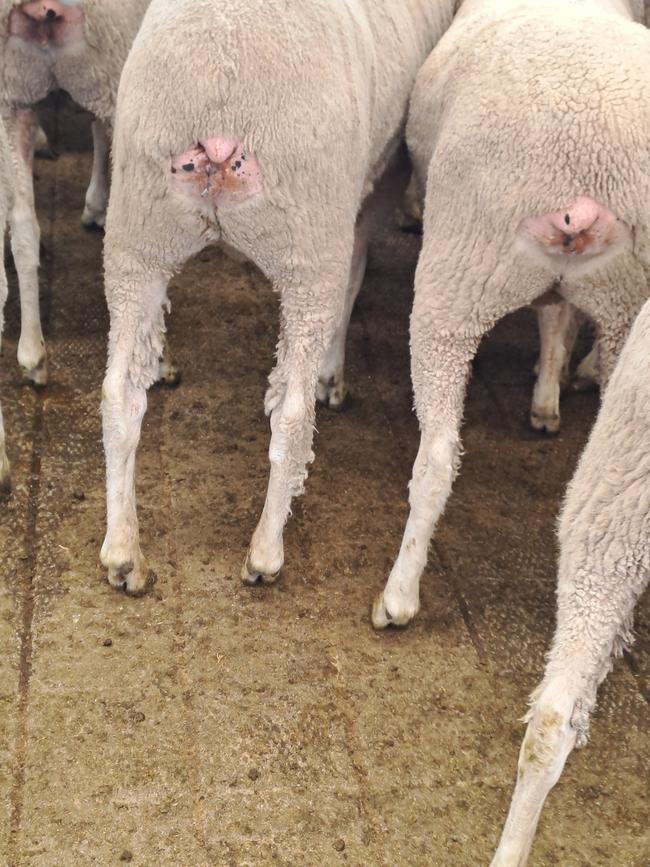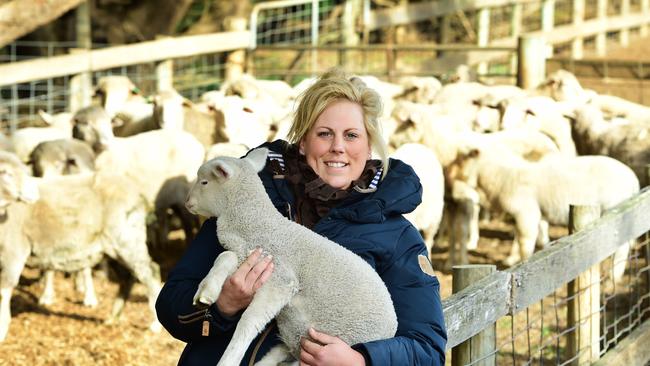The length of a docked tail in sheep needs a revisit, industry says
Short docked tails and different mulesing styles have been flagged as an issue at major sheep sales this spring, with different industry voices agreeing it needs to be addressed.
Short docked tails and different styles of mulesing on sheep have been flagged as an issue at some major sheep sales this spring.
And the industry agrees it is something that needs to be addressed.
WoolProducers Australia general manager Adam Dawes said both tail docking and mulesing were generally done to mitigate flystrike risk, but if they aren’t done well enough it can have the opposite effect and can also introduce other problems such as prolapse or skin cancer.
“Lamb marking is something most producers do every year, and it is fair to say the technique hasn’t changed greatly in the past 20-30 years, except for pain relief, so it does need a revisit,” Mr Dawes said.
Mr Dawes said WPA along with Sheep Producers Australia were currently working on a project to define best practice lamb marking, identify barriers to adoption and inform the development of an extension program.
Currently, the Sheep Welfare Standards and Guidelines set out minimum standards and recommendations for mulesing and tail docking.
Some of the key guidelines for tail docking and mulesing include: docked tail should be long enough to cover the vulva in female lambs and be of similar length in males and mulesing should only remove sufficient wool-bearing skin appropriate to the conformation of the lamb being treated to achieve flystrike protection.
However, results of the 2021 Australian Wool Innovation Merino Husbandry Practices Survey found 58 per cent of respondents docked tails at one or two joints which is shorter than recommended best practice.
Docking tails shorter can predispose those lambs to rectal prolapse, bacterial arthritis, cancer of the perineal region and breech strike.

In a lamb marking procedures training guide developed by AWI, WPA and the Livestock Contractors Association, some of the most important points in lamb marking and mulesing operations are: tails are to be docked at the third or fourth joint, do not cut into or remove the bare (non wool growing) skin and leave a “V” of wool-bearing skin to one-third to two-thirds the length of the docked tail.
Livestock contractor and Farm Assist Stock Handling principal Lisa Virgona from Derrinallum said tail length is absolutely critical.
“We always cut the ewes at the third joint and the males at the second to allow for tail movement and for them to lift the tail to urinate, away from their body,” she said.
Ms Virgona said there was currently nobody regulating mulesing or lamb marking.
“I was accredited back in 2008 via AWI, but this has since expired.”

Victorian Farmers Federation livestock group president Scott Young said there needed to be more education to producers on the benefits of lamb marking to the best industry standards rather than “producers thinking sheep are dirty because they have a longer tail”.
“I’m not sure as an industry we understand the reasons why tail length is recommended at the third or fourth joint, so that needs to get out there,” Mr Young said.





